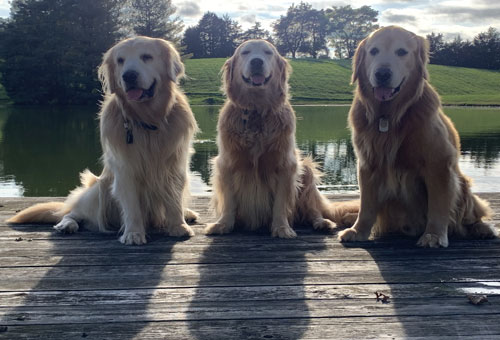Some dog breeds are more stubborn than others, a common trait in the canine world. Spitz-type dogs can be independent and suspicious of strangers. Herding dogs can be wickedly intelligent and bored. Hunting hounds can make it difficult to find an exciting target. Even deceptively gentle dogs like English bulldogs can be challenging to train.
Understanding Your Dog’s Genetic Drives
Each breed was created to fulfill a specific niche in the dog world. Research the breed that interests you before you make a decision. It would be best if you chose a dog that is suitable for you and your lifestyle.
You may have started a journey with your dog and found it challenging to train your “stubborn” dog. A hunting dog cannot be taught the same way as a Maltese. Husky and Great Danes require different training methods.
These tips can be helpful for stubborn breeds of any type, but understanding your dog’s thinking will help you unleash their potential. Sometimes a dog who is stubborn or difficult to train needs a different communication method.
Keep in mind that your dog may be confused or uninterested in your training methods and not stubborn at all. If your dog is stubborn, don’t lose heart. Even stubborn dogs can be managed with consistent training.
1) Avoid Medical Problems
Sometimes, a dog that won’t sit can be a dog with a painful hip, knee, or spine. A dog who doesn’t listen to commands cannot hear. It is essential that you get a complete health check from your veterinarian before you start to address any unusual behavior issues.
2) Check Your Unintentional Reinforcers
Sometimes, what we think encourages a dog to change a behavior can reinforce that behavior. If dogs are fed tempting food, they will not learn to stop them from eating.
Owners are often training their dogs to behave in a way that is not appropriate for them. This includes paying too much attention to an aggressive dog or trying to calm it down.
To control problem behavior, you and your family will need to examine your behavior patterns through the eyes of your dog’s genetic behavior plan. Everyone in the household must agree upon your house rules and training methods, including unintentionally or intentionally reinforcing undesirable behavior patterns.
Make lasting changes in your routine and habits to ensure your dog is as happy as possible.
3) Avoid Punishments
Punishment, rather than giving feedback to your dog about how you expect him to behave, can increase anxiety and mistrust. An anxious dog won’t learn, and a dog that fears you won’t be motivated to please.
Remind your dog to focus on you and reward them with praise and treats.
4) Grab Your “Stubborn” Dog’s Attention
Dog owners often say that their dog is stubborn and won’t listen, and we find out that they have not taught their dog to listen. Dogs don’t naturally learn how to pay attention and to receive verbal and visual cues. Some companion breeds can be very intuitive and patient, but any dog with a reputation for being stubborn could have trouble paying attention.
Sometimes, the problem is simple: the dog is in the adolescent stage and has trouble focusing, which is something all dogs experience.
You can capture your dog’s attention whether you are trying to get it for the first or second time. Next, you should remove your dog’s stimulus from situations that could out-compete yourself as a trainer. This will allow you to reward your dog with praise and treats to keep him focused.
5) Start with High-Value Treatments
A high-value, juicy treat is the best way to keep a dog’s interest. To ensure your dog is paying attention to you, it’s essential to make sure they know you are the source for all good things.
Make a baggie with chicken, beef chunks, or dried liver. Peanut butter is a classic favorite but can be challenging to use in training. You should stick to treats that your dog enjoys but which you won’t have access to if you’re not training. Dogs won’t be captivated by small amounts of dry dog biscuits or kibble, and they will only notice everyday meals and snacks.
6) Expect Slow Progress
Once you have captured your dog’s attention, communicate with him a command and then let them follow that command. Keep practicing that command every day.
Keep calm and use a positive tone. Don’t forget to forgive your dog for making mistakes. Confident dog trainers, your new role, will not react emotionally to a dog’s mistakes or create a scene.
Refocus your dog’s attention, reward obedience, and keep working with your dog as much as possible.
7) Add Distractions
When your dog consistently obeys a cue, you can introduce distractions. Some dogs find it difficult to move to a more busy area of the house.
You’ve reached your next plateau when your dog works with you to stay on command. Keep working until your dog is confidently mastering the task. Then, add another distraction to help him.
8) Make training a habit for your dog’s entire life.
It is easy to add distractions to your dog’s training and teach them how to overcome them. You will have another training target as your dog learns new commands and is exposed to new situations. Training doesn’t take a short time to show a puppy how to be a good dog. It is a way to interact with your dog that makes it happy to seek guidance in all aspects of its life.
9) Working with professional dog trainers like us
All Dogs Unleashed will send a trainer to your home. Your trainer will analyze your relationship with your dog and teach you how to communicate commands to your dog, so they understand you and are motivated to follow your lead.

